You need to be careful because normals don't necessarily transform like points do, and the distance is the perpendicular distance to the origin, so you have to compute d'= d + n.v. If all you're doing is translation and rotation, then you can rotate the normal and compute a new perpendicular distance. But, if you're scaling your axes differently, or doing a general projective transformation, then you need to treat things differently.
The way that works for everything is to use homogeneous coordinates, so all your transforms are 4x4 matrices, and both your points and your planes are 4-vectors:
point p=(x,y,z) -> homogeneous (x,y,z,1), equiv. to (x*W, y*W, z*W, W)
plane q=[n=(a,b,c), d] -> homogeneous [a,b,c,d], equiv. to [a*K, b*K, c*K, d*K)
-> point p is on plane q iff: p.q=0 (using homogeneous coords, as above)
Generally, you will multiply all your transformation matrices into one 4x4 matrix T, and use that matrix on every point, to determine its final transformed position. The trick is, you need to use the inverse transpose of T to transform your plane coordinates. From the following, you can see that this preserves incidence between points and planes:
point p' = T p
plane q' = (T^-1)^t q
-> point p' is on plane q' when: p'.q'=0
then, note: p'.q' = p^t T^t (T^-1)^t q = p^t q = p.q
so: p'.q'=0 whenever p.q=0




